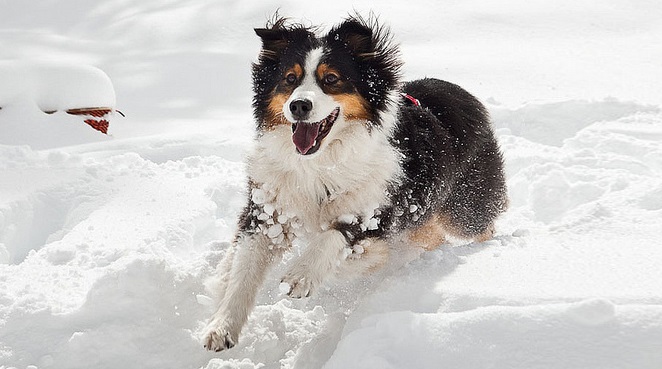Dogs and cats can withstand cooler weather when certain conditions are met. Some breeds are even known to develop heavier coats for colder climates. There are, however, some breeds that are not equipped to handle drastic changes in temperatures. Pet owners need to use common sense in order to protect their pets during colder seasons. If you and your pet enjoy the winter months and wish to spend time out of doors, the following information can help you protect your pet from the cold:
Antifreeze is poisonous to your pets. Make sure to wipe up any spills and keep these and other harmful chemicals out of your pet’s reach or path.
Feral and stray cats often take winter refuge under cars and can sometimes even make their way under the hoods. Make sure the coast is clear before starting your car.
Be sure to wipe your dog’s feet (and stomach in small dogs) after a winter walk. Rock salt or other ice melting chemicals can cling to your pet’s fur and he can ingest these harmful chemicals when cleaning himself.
ALL PETS NEED TO BE INSIDE. Never leave your pet outside for extended periods of time in the cold, even in a doghouse. When the temperature drops, your pet can get frostbite or even freeze to death. *NOTE: If you notice a pet being locked outside in the winter, be sure to report it to your local law enforcement and humane officers.
Keep an eye on your pet’s water dish to ensure it doesn’t freeze.
Short-coated dogs are especially vulnerable to the cold and shouldn’t be outside unattended or for too long.
Pets should not be left in the car. Most people know not to leave their pets in a car in the summer, but the same goes for the winter. A car interior can get as cold as an ice box and a pet can easily freeze.
Check your dog’s paw pads for ice balls. If your dog is lifting his feet a lot or seems to be walking strangely, his feet are probably too cold or ice may be forming which can cause frostbite.
Keep your pet groomed. Believe it or not, knotted or matted hair doesn’t insulate properly. Brush your dog’s hair regularly in the wintertime especially.
Adjust your pet’s diet as necessary. If your dog spends a lot of time outside, he may need more calories in the winter to produce body heat. If your dog spends most of his time indoors and has a decrease in activity, he may require fewer calories. When in doubt, always ask your vet about seasonal diet changes.
If, despite these precautions, your pet suffers from exposure to the cold, wrap him up in a blanket and go to your veterinarian as soon as possible. Do not immerse your pet in warm water and avoid heating pads that may cause thermal burns.
*If you notice a pet being locked outside in the winter, be sure to report it to your local animal control facility.
Submitted by North Shore Animal League America
To learn more about keeping your pets safe and healthy at all times, visit www.animalleague.org.


































